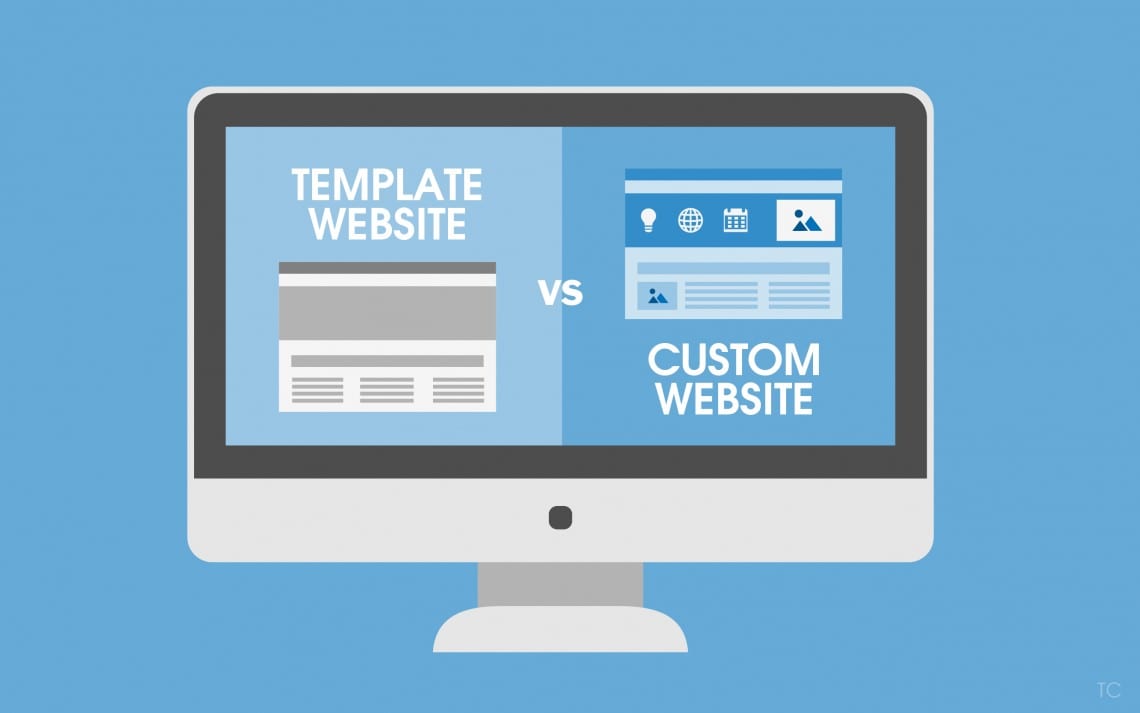SEO Guides, Tips & More!
Learn from Our Experience
Building a Template Website – Pros & Cons
Most accounting marketers understand the importance of a robust website for maintaining the firm’s brand, engaging potential employment candidates and prospects interested in your services. Ensuring that prospects can find your firm through a Google search is key to identifying and attracting new clients. Let’s face it most people will “Google” a company before they purchase from them whether it’s a service or product. Having the most attractive site with a brand appropriate look and feel is essential to passing the first test. When an accounting firm reviews their site and digital presence they may decide it’s time to redesign the site. This is an exciting time but also a stressful one because finding the right provider can be challenging.
A key question the accounting marketer must address is whether they want a template or custom designed and programmed website. Quite often this is a decision that must be made especially if the firm wants to leverage the WordPress Content Management System (CMS). A template site is like purchasing a site that has been pre-made and set up for you to make slight changes before launching it. The opportunity to create custom functionality is often lost. Depending on the needs, budget and goals of your firm, a template website may be exactly what you need, or may spell disaster. To help clients, prospects and others, FlashPoint has summarized the benefits and drawbacks of using this approach.
Key Advantages
- Cost – Creating a website from a template means that most of the website coding has already been created and the need for a website developer or coder is minimal which is why template sites are much more affordable than custom sites. Don’t be fooled however, a developer will still have to spend some time customizing the template and implementing the content (images and copy).
- Timing – Because much of the coding is already completed, template websites are faster to implement. Presuming all content is acquired when beginning the project and domain and hosting information is in place, a template can generally be launched in a matter of weeks. However, it’s not uncommon for content to not be prepared and this can be a significant barrier to launching. Depending on the complexity of what you want, a custom site will take significantly longer.
- Template Sophisticated – Templates that are well-designed, robust, and allow for a reasonable amount of customization and future scalability are the best to use. However, there can be significant disadvantages to using templates, especially if your developer isn’t particularly skilled.
Key Disadvantages:
- Cookie Cutter – For some, having a site that looks like everyone else’s is not an issue or a concern. Often template websites have a similar look and feel as the masses. Be forewarned that the most popular themes have been downloaded thousands of times. However, a skilled designer can minimize this problem with creative use of graphics and customization within the template.
- Limited Capabilities – While you may have some freedoms to change fonts, colors and minimal architecture, it’s important to note that there can be limitations. While a degree of customization is possible within templates – especially the pricier ones – you’re largely stuck with the parameters of the template for your design and navigation. While this may not be a big issue, it could be more serious if you don’t have the ability to include a specific functionality or want to change the way the existing website functions. It can also be challenging if you want the website to grow with you. Since you are taking what was pre-built it may mean that functionality additions down the road will be expensive and involve several hours from a coder.
- Quality of the Template – It cannot be expressed enough that some templates are not well-made or maintained. Anyone considering using a template must educate themselves to understand that websites are not just built and then never maintained. Just as your car requires routine maintenance to continue running well, so does a website. Because WordPress is an constantly updated CMS and often issues updates for things such security concerns which happen as often as is needed. Additionally, it is not uncommon for major updates to occur several times a year. Unfortunately, not all templates are developed to keep up with the changes. If your template isn’t built solid, it very well may break when you or your developer install a WordPress update.Fortunately, there are templates which are a bit more expensive and better-designed that are less likely to develop these issues. To minimize the risk, it’s crucial to carefully read reviews and history of both the template and its developer before making your template choice.
- Security Concerns – Be cautious when adding things such as plug-ins to improve your website’s functionality. Unless your developer is very savvy, adding third party software to a template can make your website susceptible to problems. Although WordPress is the preferred CMS for many companies, FlashPoint included, there are security risks that must be considered.
In Conclusion
When done correctly and with the help of an experienced team, a template website can be a very powerful tool, but a poorly-executed one will work against you. Whether you choose to build from a template or make the investment to design a custom website, you can use the above information to make an educated choice. If you’d like to learn more about our website design process or have the need for a custom design, contact us today. We’d love to help.

